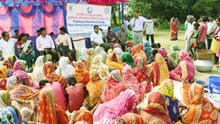
Soil plays a pivotal role in sustaining life on Earth. It not only supports plant growth but also forms the foundation for agriculture, which is essential to food production, biodiversity, and ecosystem stability. However, soil is also a breeding ground for a variety of pathogens that can lead to soil-borne diseases, which pose significant challenges to agricultural productivity, soil health, and human well-being.
These diseases are primarily caused by microscopic organisms such as fungi, bacteria, and nematodes, which can negatively affect crop growth, yield, and soil structure. Addressing the causes of soil-borne diseases and implementing effective solutions can help mitigate their impacts, ensuring more sustainable and productive farming systems.
Common Causes of Soil-Borne Diseases
Soil-borne diseases are often the result of a combination of agricultural practices and environmental conditions. Below are some of the primary causes:
-
Inadequate Crop Residue Management: Improper handling or disposal of crop residues after harvest can provide a reservoir for pathogens, allowing them to persist in the soil and infect future crops.
-
Environmental Factors: Unpredictable weather conditions such as excess moisture, temperature fluctuations, or drought can create conditions favorable for pathogen proliferation, increasing the risk of disease outbreaks.
-
Mono Cropping: Repeatedly growing the same crop in the same soil year after year depletes nutrients, disrupts the soil's microbial balance, and encourages the buildup of disease-causing pathogens.
-
Poor Soil Drainage: Waterlogged or compacted soils create anaerobic conditions that allow soil-borne pathogens to thrive, reducing soil health and crop productivity.
-
Introduction of Infected Seeds or Plants: Planting infected seeds or using contaminated transplants can introduce pathogens into otherwise healthy soil, leading to disease outbreaks.
-
Overuse of Chemical Inputs: Excessive application of chemical fertilizers and pesticides can harm beneficial microorganisms in the soil, weakening the soil ecosystem and making it more susceptible to disease.
-
Contaminated Tools and Equipment: Using farming tools and machinery that haven’t been sanitized can lead to the spread of pathogens between fields, especially when moving from one crop to another.
Impact of Soil-Borne Diseases
Soil-borne diseases affect not only agricultural systems but can also have far-reaching consequences on human health. The impact is twofold:
- Agricultural Challenges:
-
Crop Damage: Soil-borne pathogens attack the roots, stems, and leaves of plants, leading to symptoms such as wilting, yellowing of leaves, and root rot. These infections can stunt plant growth, reduce yields, and even cause complete crop failure in severe cases.
-
Economic Losses: Reduced crop yields directly translate into financial losses for farmers. These economic setbacks can be devastating, especially in regions dependent on agriculture for livelihoods.
-
Soil Degradation: Many soil-borne pathogens can persist in the soil for years, making it difficult to grow healthy crops unless proper soil management practices are implemented.
- Human Health Risks:
-
Contaminated Produce: Infected plants can harbor harmful pathogens that may transfer to food crops, posing a risk to human health. If not adequately washed or cooked, these pathogens can cause foodborne illnesses.
-
Water Pollution: Soil-borne pathogens can leach into nearby water supplies through runoff or infiltration, leading to water contamination and posing significant health risks to local communities.
Identifying Symptoms of Soil-Borne Diseases
Recognizing the early symptoms of soil-borne diseases can help in taking timely action to prevent further spread. Key indicators include:
-
Stunted Growth: Plants affected by soil-borne diseases often show slower or limited growth compared to healthy plants.
-
Wilting: Infected plants may appear wilted despite adequate watering, due to the root system being compromised by pathogens.
-
Root Rot: The roots of infected plants may turn soft, discolored, and decayed, reducing the plant's ability to absorb nutrients and water.
-
Discoloration of Leaves and Stems: Yellowing, browning, or spotting of plant leaves and stems is a common sign of fungal or bacterial infection.
Prevention Strategies for Soil-Borne Diseases
Preventing soil-borne diseases requires an integrated approach that emphasizes good agricultural practices and soil management. Here are some effective prevention strategies:
-
Soil Management Practices: Increasing soil organic matter through composting or applying organic fertilizers can improve soil structure, enhance microbial activity, and reduce pathogen levels.
-
Crop Rotation and Disease-Resistant Varieties: Alternating different crops in the same field helps break the pathogen’s life cycle, while planting disease-resistant varieties can reduce the risk of infection.
-
Intercropping and Mulching: Planting a mix of crops or applying mulch can improve biodiversity, reduce pathogen proliferation, and regulate soil moisture and temperature, creating less favorable conditions for disease.
-
Clean Farming Equipment: Regularly disinfecting tools and machinery helps prevent the spread of pathogens between fields and reduces cross-contamination.
-
Certified Seeds: Using disease-free or certified planting material ensures that pathogens are not introduced into the soil, lowering the risk of infection.
-
Buffer Zones: Establishing buffer zones between different fields or between fields and water sources can help prevent pathogen migration, especially in large agricultural areas.
Treatment Methods for Soil-Borne Diseases
Once soil-borne diseases are identified, timely and effective treatment can help limit their spread and minimize crop damage. Some effective treatments include:
-
Biological Control Methods: Introducing beneficial microorganisms, such as mycorrhizal fungi or Trichoderma species, can suppress harmful pathogens by competing for resources or directly inhibiting their growth.
-
Green Manuring and Bio Agents: Incorporating specific green manure crops into the soil can help suppress pathogens. Additionally, using bio-control agents like Bacillus subtilis or Pseudomonas species can enhance soil health and control pathogen populations.
-
Cow Dung Manuring: Applying well-decomposed cow dung as manure enhances microbial activity and improves soil fertility, creating a more favorable environment for beneficial organisms while reducing pathogen load.
-
Solarization: Using clear plastic sheets to cover soil during the hot summer months traps solar heat, effectively killing pathogens, weed seeds, and pests in the process.
-
Composting: Well-decomposed compost can improve soil structure, increase organic matter, and promote beneficial microorganisms that suppress pathogens.
-
Soil Testing and Amendments: Regular soil testing helps identify nutrient deficiencies or imbalances that may contribute to pathogen proliferation. Amending soil with lime or sulfur can improve its health and structure.
-
Integrated Pest Management (IPM): A holistic approach that combines cultural, biological, and chemical methods can be highly effective in managing soil-borne diseases without relying too heavily on chemical treatments.
Healthy, fertile soil is the backbone of sustainable agriculture. By addressing the root causes of soil-borne diseases and employing effective prevention and treatment strategies, farmers can maintain soil health, protect crops, and ensure long-term productivity. Through practices like crop rotation, biological controls, and organic amendments, we can minimize the impact of these diseases on agricultural systems and human health. Protecting soil from pathogens is not only crucial for today’s food security but also for maintaining the resilience of agricultural ecosystems for future generations.
















